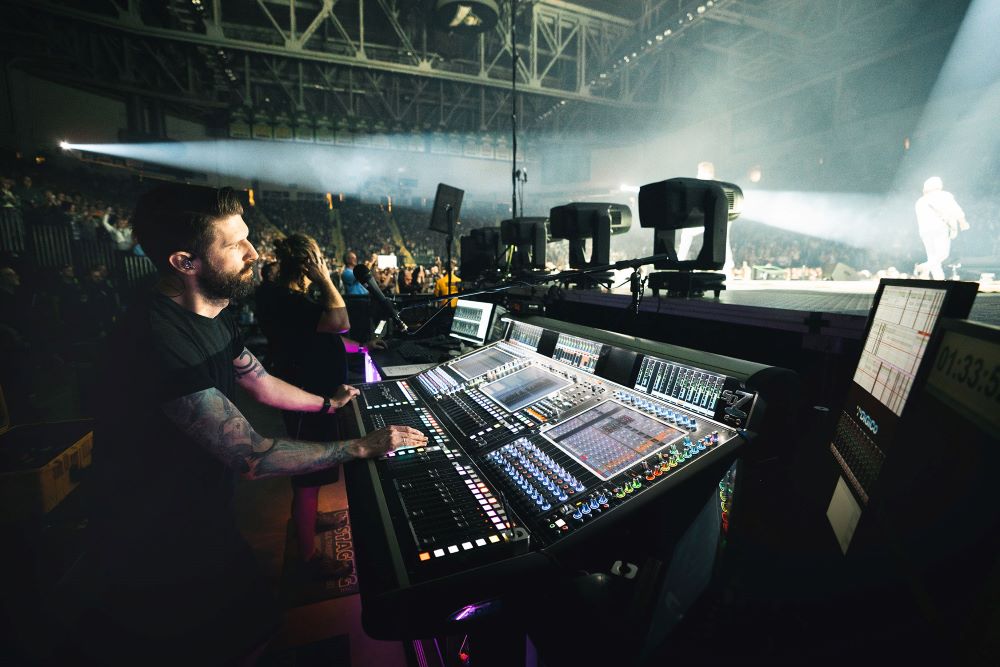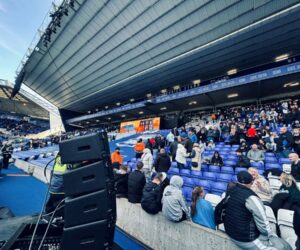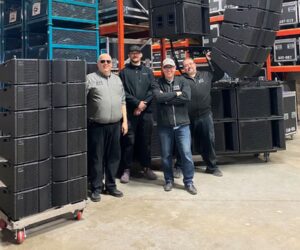Popular country artist Thomas Rhett’s just-concluded “Bring the Bar to You” Tour, a 30-date US trek that kept him and his band busy from June to mid-October, saw front of house engineer Trey Smith and monitor engineer Jimmy Nicholson plying their trade on DiGiCo Quantum7 consoles provided by Nashville-based Spectrum Sound.
The duo had plotted out much of the tour’s sonic complexity during a series of extensive rehearsals leading up to it. During these, while the band, musical director and Smith arranged keyboard and guitar-amplifier modeling patches, Nicholson optimized what Rhett would hear in his in-ear monitors while allowing each performance to be both true to the recordings and fitted to each successive venue.
The pairing of the two Quantum7 desks came about when Nicholson, who joined Rhett’s team in 2019, was asked to take over both the artist’s audio monitoring, which he had initially been doing, and the monitor mix for the entire band. Until then, show monitoring needs had been mixed on a pair of DiGiCo SD5 consoles.
“Once I took over the entire monitor mix, I realized I’d need a lot more processing power to manage it,” he says. “That’s when we both made the switch to the Quantum7,” says Smith, who added an SD-Rack, two SD-MiNi Racks, and four Orange Boxes, one for keyboards and electronic drums, one for tracks, one for guitar modeling amps, and one for FOH outboard gear all shared on an Optocore loop, to the list. “There’s a huge advantage to having identical consoles and having all of this compatible technology on the same network.”
Nicholson estimates that he was applying as many as 85 distinct configurations of the Quantum7’s Nodal Processing feature just to Rhett’s IEMs, including various multiband compression and dynamic EQ settings. The level of exactness allowed him to better fit other elements in the monitor mix around the vocalist’s mix, especially instruments that came near the vocal frequency ranges, such as keyboard, guitars, and backup singers.
“Nodal Processing allows me to apply this level of processing solely to TR’s mix” he says. “I’m able to carve out a space, in terms of both frequency spectrum and dynamics, for TR’s vocal without affecting the sounds everyone worked so hard to get during rehearsals in their own mixes.”
The console requirements for Smith, who has worked FOH for Rhett for four years, included DiGiCo’s snapshot capabilities as well as Quantum’s Mustard Processing. “With the front-of-house mix, I didn’t have the same reliance upon Nodal Processing as Jimmy needed, but I did rely heavily on other features that the Quantum7 offered,” he explains. “My goal in the mix is to bring the album to the live show. There was a lot of time dedicated to dialing in sounds with the band to recreate the sound of the record for our fans to experience in a live setting.”
To achieve this, Smith looked to the console’s Mustard EQ and compression processing along withthe Spice Rack for dynamic EQ and multiband compression. “Jimmy was using his Quantum7 in a very targeted but powerful way for each individual musician on stage, while I was using my console’s features to allow for a customized mix for each song,” he says. “We both heavily lean on the Quantum7 to accomplish our tasks and what we are expected to deliver each night. The Quantum7s have every tool we need to make that happen.”




















